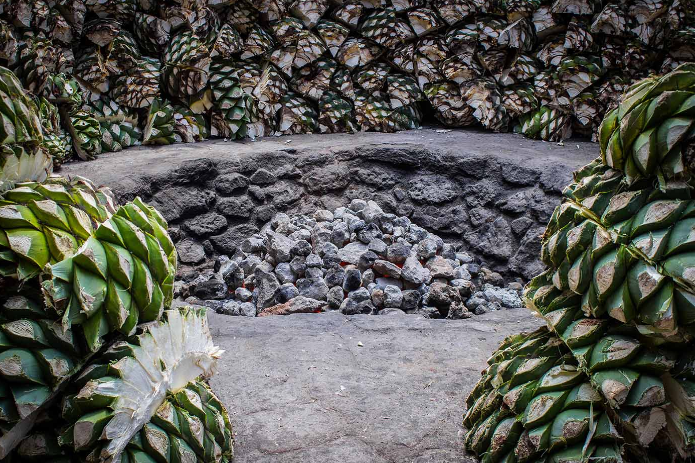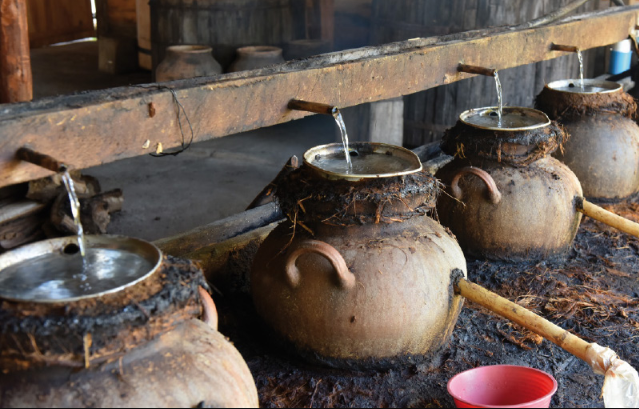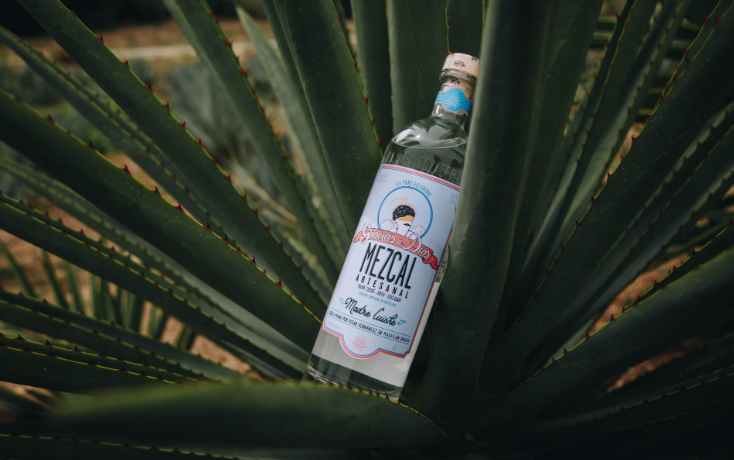The name stems from the word mezcal (“oven cooked”), which is appropriate given that its production process is a key difference between it and tequila. Mezcal varies in batch size like anything else, but more often than not, small families produce mezcal in family-kept palenques, sticking to traditional methods of distillation. Most of these aren’t interested in making huge profits or becoming a global brand but are more concerned with making mezcal as a hobby, something to share with family, friends, and neighbors. A piece of where they’re from. The Mezcal Guide is one of the best comprehensive resources for mezcal lovers.
Table of Contents
Cooking

Agave hearts are cooked in a horno, a pit in the ground that acts as an oven. The agave is either put directly onto a bed of smoldering coals, or the coals are covered with bagaso, the fibrous parts of the agave plant, creating a barrier between the coals and the agave hearts. When the agave is added, it’s covered with more bagaso and a thick layer of dirt, effectively creating an earthen convection oven, where the agave will cook for three to five days. This is where the intense smoky flavor tequila comes from. After cooking, the roasted agave hearts are then unearthed and left to sit in the open air for about a week. This allows natural bacteria to form in, on, and around the agave, starting the early stages of fermentation.
Distilling

The entire contents of the barrel – the smashed agave hearts and the water they were soaking in – are dumped into ovens, where it’s all heated into an initial kind of liquor called ordinary. A second round of distillation gives us mezcal such as the El Silencio Mezcal Espadin.
A mezcal distillate bears us the heads, tails, and Corazon (heart), which is three layers of distilled alcohol. The heart is separated from the rest, as the head and tail of the distillation process extract impurities. The heart is what makes mezcal. Water is sometimes added to the heart, to balance out the ABV.
In traditional practice, to monitor the potency of the spirit, the distilled product is dropped into a small gourd called a jicara and the master distiller watches for cordon de Perlas (string of pearls) around the edge of the jicara, which should last as long as possible. Finally, this magnificently deliberate creation is done, poured into little clay copies and the fruits of the laborious process are enjoyed. You can order it online and get hassle-free alcohol delivery at your doorstep.
Fermenting

After that, the hearts get tossed in another circular pit, where a massive stone wheel (tahona) is pulled around by a donkey or ox, smashing the agave. The pulverized hearts are put into barrels and mixed with water, then left again to ferment in the open air. That’s right: unlike something like whiskey, the barrels aren’t sealed. That’s because the tradition profile and craft of mezcal is hugely associated with where it comes from. It was explained to me in a simple, but powerful moniker: people, place, and plant. Open-air fermentation brings elements of the specific region – airborne wild yeast, naturally occurring bacteria, dust, aromas, and more – into play, bringing an element of terroir into the mix just like in wine production.
Conclusion
If you’re looking to learn more about mezcal, then this guide is for you. In addition to providing tasting notes for different mezcals, the guide also includes information on mezcal history, production, and culture. Whether you’re a mezcal aficionado or simply looking to expand your understanding of this complex spirit, the Mezcal.

